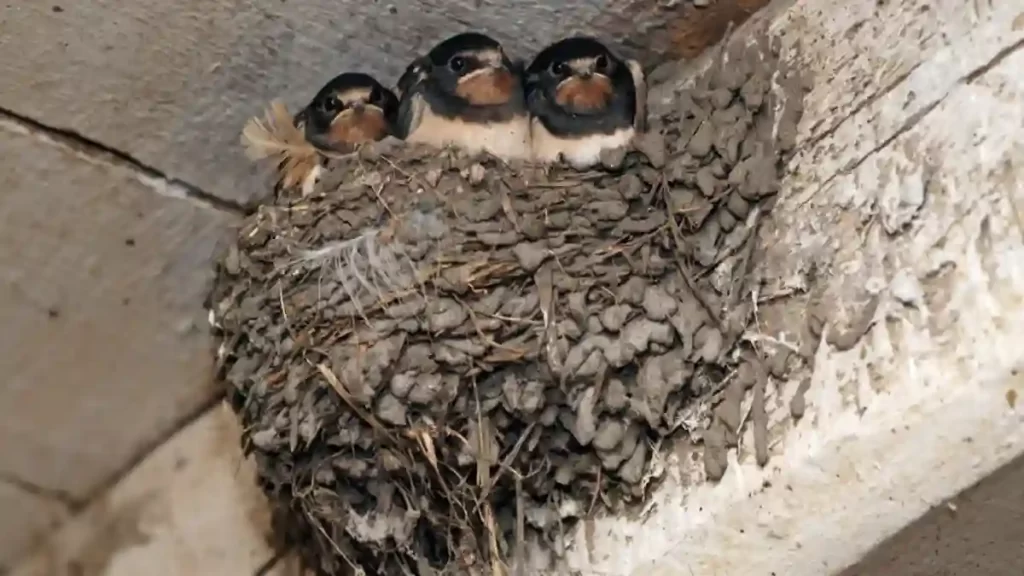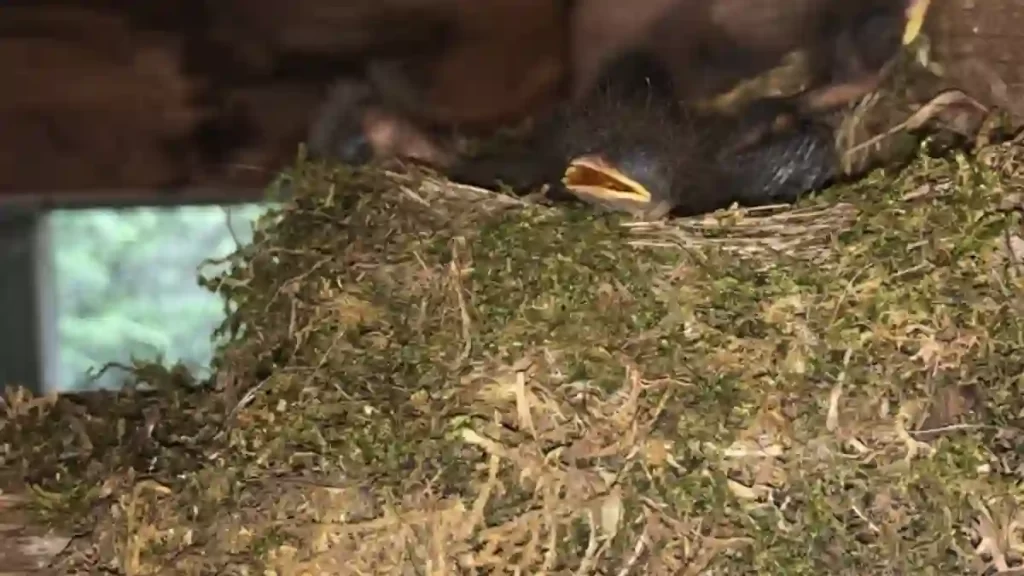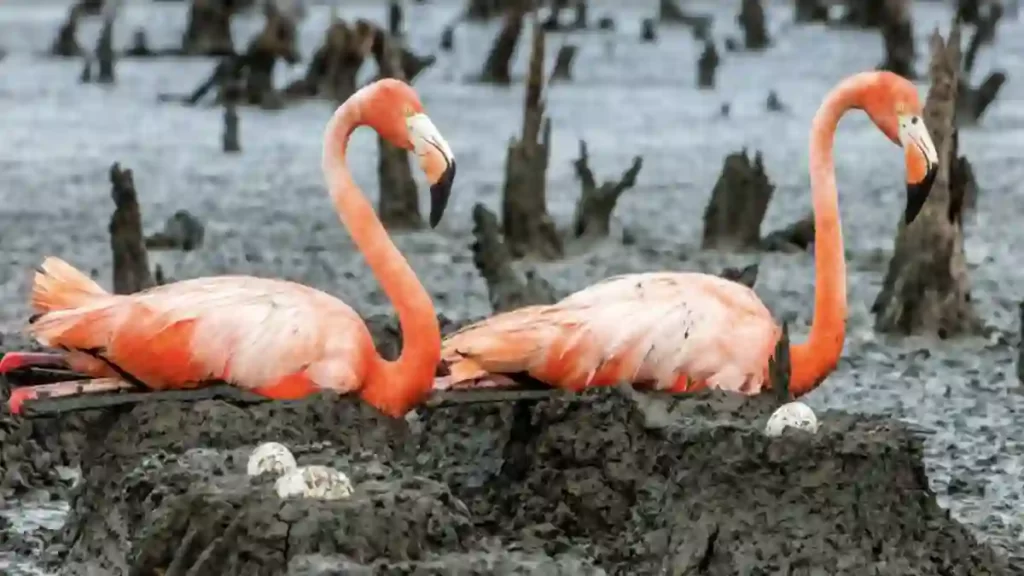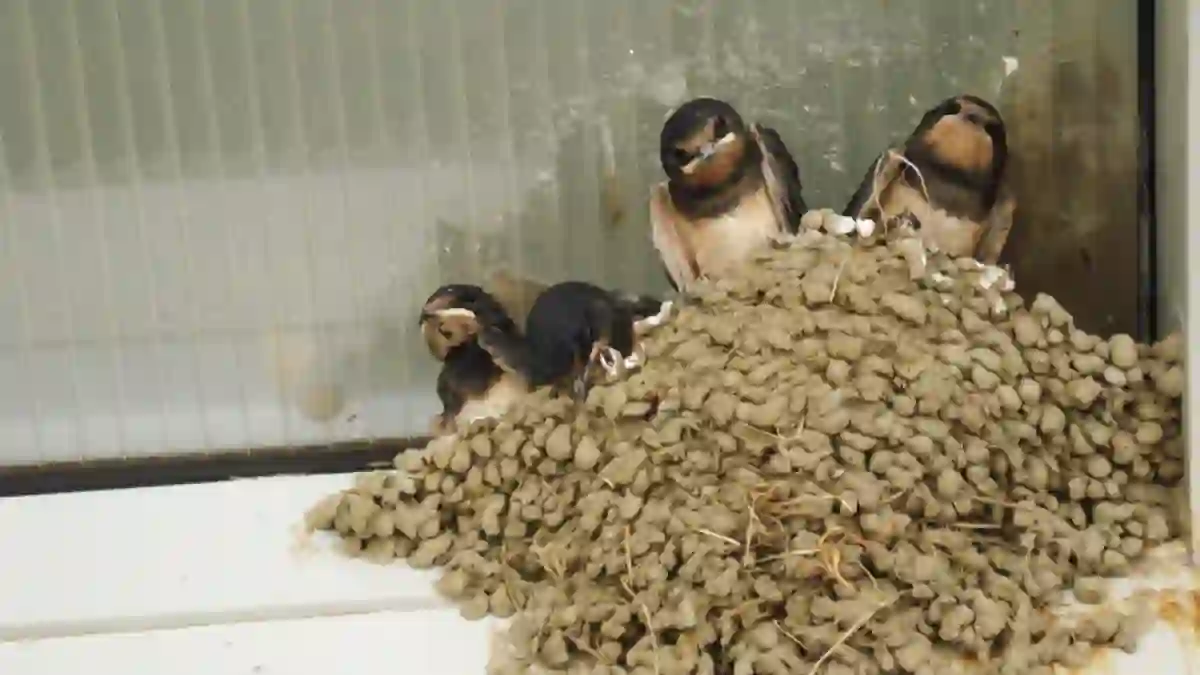Bird’s nests come in all shapes and sizes. Some birds use a few twigs, while others painstakingly build intricate homes. Some of the most impressive nests are those that are made from mud. But which birds in particular use mud to make their nests?
North American birds that use mud to make their nests include Swallows, Martins, black-billed magpies, American Flamingos, and Phoebes. There are also many birds globally that use mud for nests. These include Spotted Morning-thrushes, White-winged Choughs, Apostlebirds, and Rufous Horneros.
The list of birds that use mud to build their nests is extensive. But, do all mud nests look the same? Do birds use the mud in the same way? And how is the mud attached?
9 North American Birds That Make Mud Nests
Different species of birds use the application of mud in different ways.
Only around 57 species of lightweight birds build nests in the same way that swallows, martins, and phoebes do.
Below are some examples of mud nest-building birds from the USA, along with descriptions of their nests.
Swallows That Make Mud Nests

These are the most iconic example of birds using mud to build their nests. Not all swallows make mud nests; examples that do include:
Cliff Swallows
Cliff Swallows use approximately 1000 individual mud pellets to build an upside-down igloo-shaped nest.
The inside of the nest is lined with feathers and grass for insulation. These nests are shaped to have a small opening with a wider living chamber.
Cliff swallows make their nests on vertical rock faces, generally under rocky overhangs but also in crevices. These are communal birds, and you will find many nests side by side.
Barn Swallows
Barn Swallows also use mud pellets to build a nest. Their nests are cup-shaped, with an open top.
During construction, barn swallows add grass to the mud/saliva mixture. Once completed, more grass and feathers are added for warmth.
These nests are usually found in and around buildings, under roofs, or tree branches and cliffs.
Cave Swallows
Cave swallows build their nests out of the mud and incorporate bat guano. The nests are also cup-shaped and will contain pieces of grass and bark.
These nests are found in caves stuck to vertical walls. These birds are known for their good symbolisms.
Martins That Make Mud Nests

Similar in many respects to swallows (both are from the Hirundinidae family), some species of Martin also use mud to make their nests. These include:
Common House Martins
Common House Martins build their nest out of mud pellets.
The nest is cup-shaped, similar to a barn swallow; however, the sides extend upwards so that there is a small opening on top, similar to a cliff swallow.
These nests can be found under cliffs, roofs, bridges, and other anthropogenic structures. House martins are also communal nesters.
Purple Martins
Purple Martins are slightly different from the house martin.
They will build their nest out of twigs, bark, and dry grass, but then they sometimes add a lip of mud to the front of their nest. The nests are shallow, between one and three inches deep, so the mud helps hold the nest together.
These nests can be found in dead trees, on cliff faces, in houses, and other artificial objects.
These birds are also communal nesters, with up to 100 nests in a colony.
Phoebes That Make Mud Nests

Two species of phoebe also use mud in nest building. These are:
Black Phoebes
Black Phoebes make a cup-shaped mud nest (similar to a barn swallow) with a grass inner lining.
These nests are usually found near water, on rock faces, tree hollows, but also on human buildings.
Eastern Phoebe
Eastern Phoebe nests are similar to black phoebes’. These nests are built using mud, moss, and grass material.
These nests are located in crevices or under overhangs for protection.
Both black and eastern Phoebes are known to reuse their old nests.
American Flamingos Make Mud Nests

Flamingos pull mud towards their feet by scraping mud on the side of a water body with its beak.
This creates a crater of around a foot deep as a nest, protecting against rising water levels and temperature fluctuations.
Black-billed Magpies Make Nests With Mud
These magpies use mud to form a center cup (lined with grass), surrounded by sticks, grass, leaves, bark, etc.
These nests are built in trees, old buildings, and utility poles.
Birds That Build Mud Nests From A Global Perspective
Below are some examples of birds from outside the United States that use mud to build their nests.
Morning Thrushes
Spotted Morning-thrushes are found in Uganda, Tanzania, Kenya, Somalia, and Ethiopia.
Nests are made of mud, which is mixed with leaves, grass, and bark. Nests are lined with leaves and grass.
These nests are often built in palm trees.
Hamerkops
Hamerkops are also African birds.
Hamerkop nests (which include a roof) are built using sticks and are lined with mud for insulation.
They are built with a mud entrance tunnel that bends upwards to prevent predators from entering.
These massive nests can weigh up to 110 pounds, be as big as 4.9 feet, and can support a full-grown man! They are built in the forks of large trees.
White Winged Choughs
White-winged Choughs are Australian birds that build nests mud nests in the shape of a cup. These nests are built on a tree branch,not against a wall, so they are round.
Apostlebirds
Apostlebirds are found in Eastern Australia and build nests similar to the white-winged chough’s nest. They are, however, a bit deeper and more bowl-shaped.
These nests are also built on tree branches.
Rufous Horneros
Rufous Horneros are found in Central and South America, where they build nests with mud and sticks into a bowl shape, with sides that almost enclose the nest.
These nests are made on cliff ledges, tree branches, and shrubs close to water.
How Do Swallows And Other Birds Build Nests Out Of Mud?
In the fascinating world of birds and their nest-building techniques, we still have much to learn. Researchers are, however, beginning to crack the mysteries behind how things work.
One of these mysteries is how swallows’ nests and other mud nests can form such stable structures.
The key to a swallow’s (for example) nest building is mixing mud and their own saliva.
A swallow will go to a river or other water body and search for suitable mud. Once found, the bird will dip the mud into the water and roll it into a ball. After this, the swallow will fly back to its nest, where the mud ball is added to the structure.
During this process, saliva is mixed in. Swallow saliva contains “mucin,” a type of glycoprotein, which provides the adhesive to stick the mud together and continue holding after it dries.
This process provides a relative amount of structural cohesion and adhesion; however, after a certain weight, the bonds break, and the nest will fall.
Researchers tests discovered that a barn swallow’s nest could endure up to 41.5N of force before it fell.
This implies that there is a size limit of birds that can use mud-saliva nests.
Wondering, what do birds eat in the wild – Here’s your answer!
Conclusion
Not all of these birds use mud in the same way. Some birds use mud pellets and saliva to build their nests, while others only use mud to “glue” parts of their nest together.
Whatever the technique, birds are still incredible and have learned to survive and adapt to a changing world.
Sources


